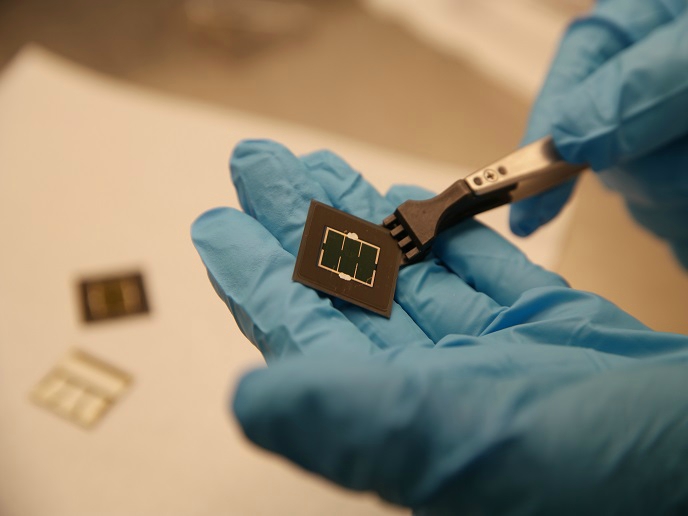A push for perovskite-silicon tandem solar-cell technology
Photovoltaic (PV) technology has advanced rapidly since the first demonstration of a practical crystalline silicon solar cell by Bell Labs in 1954. However, as efficiencies reach their theoretical limit, the search continues for new materials and methods to increase efficiency and decrease cost. Among the most promising third-generation technologies under development are those utilising perovskites, a class of crystalline organometal halides in which many different cations can be integrated. Efficiencies have improved exponentially over the last decade and the market is predicted to grow to over USD 500 million by 2028. The EU-funded CHEOPS project set out to achieve breakthroughs in efficiency and processes for upscaling production of perovskite-based solar cells. Standard silicon absorbs low-energy photons. Perovskite offers the opportunity to harvest more of the light’s energy as it is uniquely qualified to take advantage of high-energy blue photons. Using perovskite in their active layers, researchers sought to exploit the material’s potential for large-scale production at low cost. Advancing the frontiers of perovskite-based solar cells Technologically, the first goal was to enhance the efficiency of single-junction perovskite cells, and then to exploit so-called tandem technology by growing a layer of perovskite over silicon. CHEOPS researchers upscaled a 1x1 cm2 low-lead perovskite single-junction lab prototype with 15 % efficiency to a 10x10 cm2 demonstrator module with minimal loss in efficiency. This was a major accomplishment. It also highlighted a remaining challenge for the new technology, controllability of the processes. The team is working on developing new deposition techniques to enable uniform large-area coating of compact films compatible with industrial requirements. Regarding the perovskite-silicon tandem technology, project coordinator Nicolay Sylvain explains: “CHEOPS demonstrated for the first time the possibility to grow perovskite top cells on silicon-bottom cells with a fully textured surface. Since the standard silicon PV market is using this kind of textured cells, being able to use them this way is critical for future perovskite development. In addition, world record efficiencies were demonstrated by several CHEOPS partners.” The perovskite-silicon heterojunction tandem cell (1.43 cm2) achieved a power conversion efficiency of 25.4 %, surpassing the previous world record of CHEOPS partners. Scientists also developed unified and standard protocols for measurement to ensure more accurate comparisons of different approaches. As Sylvain explains: “Currently, there are a lot of different protocols used to measure perovskite-based PV devices, which makes comparison difficult. CHEOPS partners have agreed on a unified measurement protocol which will be communicated in the form of a white paper.” Perovskite-based solar cells get the green light The team conducted critical socio-economic analyses, demonstrating that development of the technology is warranted. According to Sylvain: “Perovskite is indeed a technology which can strongly modify the PV landscape by allowing us to achieve more efficient and lower-cost PV modules.” Building on their major successes in demonstrating evaporation of perovskite on fully textured silicon-bottom cells and the low cell-to-module efficiency loss for single-junction perovskite cells, several partners are already in talks with manufacturers to capitalise on project outcomes. The future is bright for perovskite PV modules and CHEOPS' contributions pave the way for European leadership in this important field.
Keywords
CHEOPS, perovskite, cells, silicon, efficiency, PV, solar, solar cells, single-junction, tandem cell







